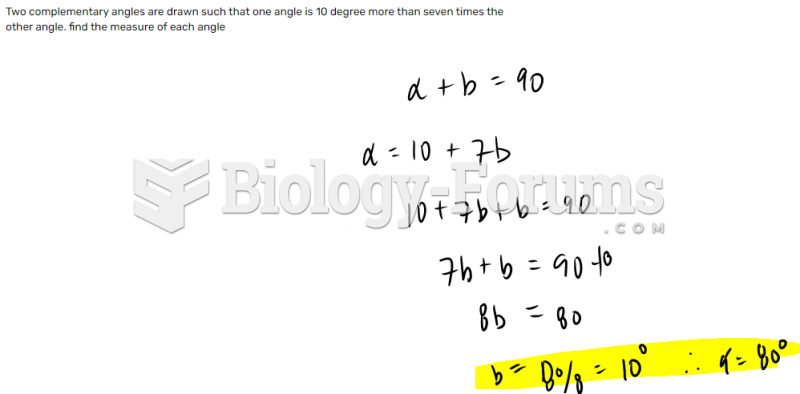The witchcraft cases in Salem in 1691-1692 at first resembled those in other places and times. Several girls experimented with magic, aided by a slave woman Tituba and her husband John, who together baked a witch cake of rye meal and urine, feeding it to a dog. The girls, who included nine-year-old Betty Parris, the daughter of Salem Village's minister, started having fits, presumably caused by witches. According to one report, the girls began getting into holes, and creeping under chairs and stools, and to use sundry odd postures and antic gestures, uttering foolish ridiculous speeches. Possession spread to other village girls, leading to the arrest of three women as witchesTituba; a poor beggar, Sarah Good; and an ailing elderly woman, Sarah Osborne. These three alleged witches were the sort of people traditionally prosecuted for the crime. Generally, in witchcraft cases, the accused were women past menopause, who in various ways deviated from expected roles. They had fewer children than the average woman their age. Lacking sons, a significant percentage of accused witches were heirs or potential heirs of estates, with greater economic autonomy than most New England women. Some claimed the power of a cunning woman to heal and foretell the future; many had been convicted of assaultive speech; and they were often involved in conflict with their families and neighborhoods. Revealingly, men of the same age group and troublesome character were much less likely to be identified as witches. These assertive old women went beyond the accepted bounds of female behavior and, as a result, became vulnerable to prosecution as witches. While the Salem craze commenced in the time-worn fashion, it soon engulfed people of all social levels. Accusations descended upon prosperous church members, a minister, a wealthy shipowner, and several town officials. Hysteria spread from Salem to adjacent towns. Over threequarters of the alleged witches were women; half of the accused men were their relations. Of those executed, fourteen women and five men were hanged on Witches Hill and another man was crushed to death with stones. Only one of the dead was of high statusthe Puritan minister George Burroughs. Governor Phips, supported by influential clergymen, had allowed the prosecutions to proceed after his arrival, but put a stop to them when the accusers pointed to people at the highest levels of society, most significantly, to his own wife, Mary Phips. It had become clear, to many besides the governor, that the situation was out of control, that the evidence presented by the possessed was unreliable and quite likely the work of the devil. After Salem, witchcraft no longer assumed its earlier importance in New England society. A conclusion that can be drawn from the second paragraph is that
a. those who were accused were modest, quiet ladies.
b. there was a bias against women who were outspoken or aggressive.
c. men were accused only when they were bad husbands.
d. women who were accused of witchcraft were usually good housewives.
Question 2
The witchcraft cases in Salem in 1691-1692 at first resembled those in other places and times. Several girls experimented with magic, aided by a slave woman Tituba and her husband John, who together baked a witch cake of rye meal and urine, feeding it to a dog. The girls, who included nine-year-old Betty Parris, the daughter of Salem Village's minister, started having fits, presumably caused by witches. According to one report, the girls began getting into holes, and creeping under chairs and stools, and to use sundry odd postures and antic gestures, uttering foolish ridiculous speeches. Possession spread to other village girls, leading to the arrest of three women as witchesTituba; a poor beggar, Sarah Good; and an ailing elderly woman, Sarah Osborne. These three alleged witches were the sort of people traditionally prosecuted for the crime. Generally, in witchcraft cases, the accused were women past menopause, who in various ways deviated from expected roles. They had fewer children than the average woman their age. Lacking sons, a significant percentage of accused witches were heirs or potential heirs of estates, with greater economic autonomy than most New England women. Some claimed the power of a cunning woman to heal and foretell the future; many had been convicted of assaultive speech; and they were often involved in conflict with their families and neighborhoods. Revealingly, men of the same age group and troublesome character were much less likely to be identified as witches. These assertive old women went beyond the accepted bounds of female behavior and, as a result, became vulnerable to prosecution as witches. While the Salem craze commenced in the time-worn fashion, it soon engulfed people of all social levels. Accusations descended upon prosperous church members, a minister, a wealthy shipowner, and several town officials. Hysteria spread from Salem to adjacent towns. Over threequarters of the alleged witches were women; half of the accused men were their relations. Of those executed, fourteen women and five men were hanged on Witches Hill and another man was crushed to death with stones. Only one of the dead was of high statusthe Puritan minister George Burroughs. Governor Phips, supported by influential clergymen, had allowed the prosecutions to proceed after his arrival, but put a stop to them when the accusers pointed to people at the highest levels of society, most significantly, to his own wife, Mary Phips. It had become clear, to many besides the governor, that the situation was out of control, that the evidence presented by the possessed was unreliable and quite likely the work of the devil. After Salem, witchcraft no longer assumed its earlier importance in New England society. What is the relationship between parts of the following sentence? These assertive old women went beyond the accepted bounds of female behavior and, as a result, became vulnerable to prosecution as witches.
a. generalization and example
b. cause and effect
c. comparison
d. addition







